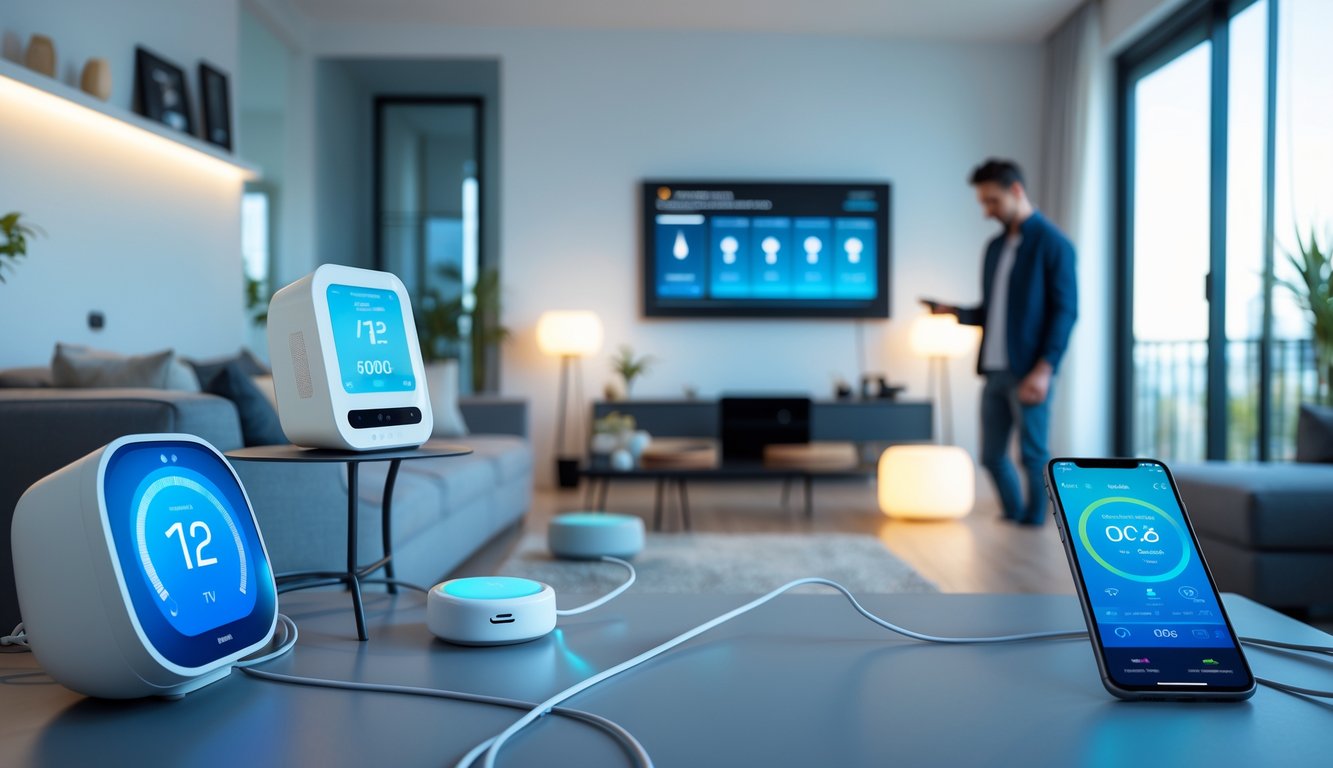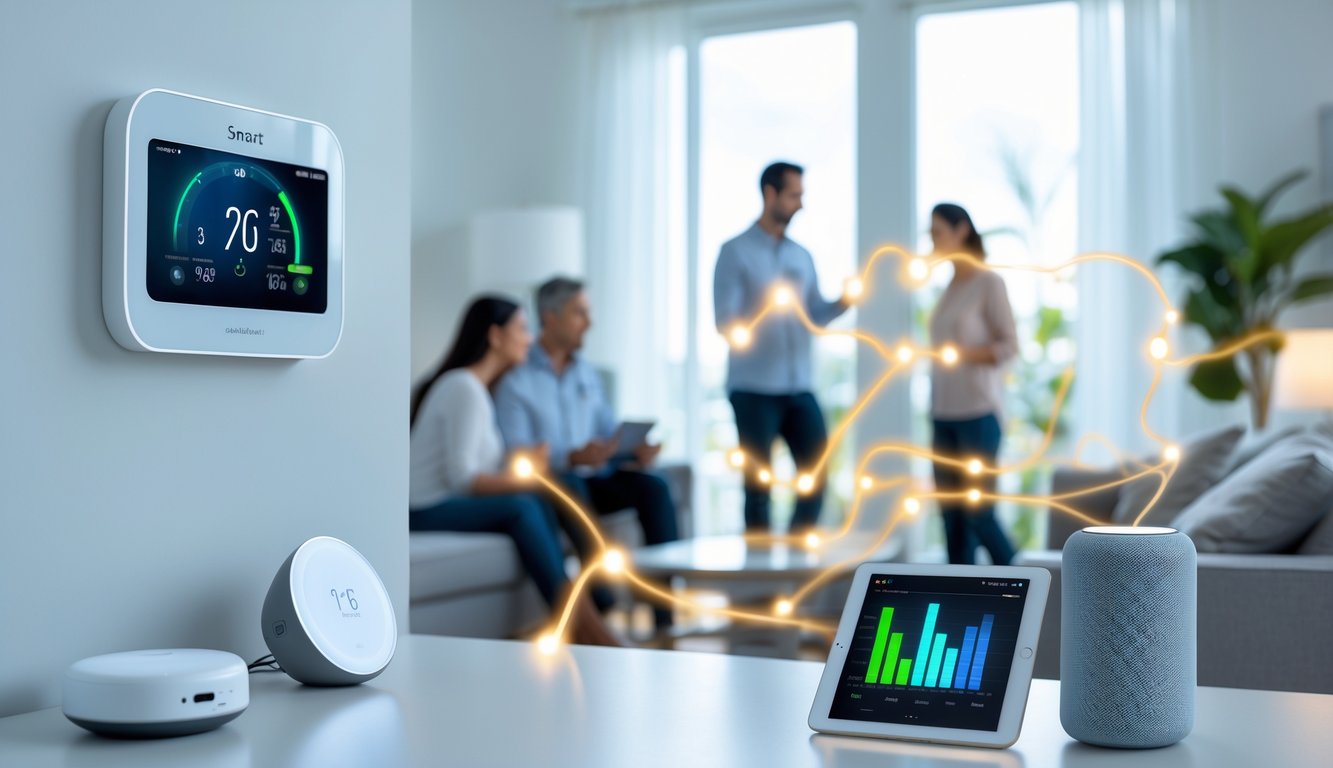
How Smart Thermostats Affect Energy Bills

Why does everyone act like smart thermostats are the answer to energy bills, when mine basically just keeps my bill flat? “Up to 23% savings,” they say. Okay, but my bill looks the same every month.
Optimizing Heating and Cooling
So, my Nest (or Ecobee, whatever) is supposed to learn my schedule and optimize everything. Instead, it cranks the AC like I’m throwing a party for twenty people. All these guides talk about micro-adjustments, learning routines, geofencing. EPA claims 8% average savings, which is something, but not the 20% they advertise (Consumer Reports). Thing is, if you already set your thermostat and forget it, you won’t save much. Once, I let the thing “learn” for three months and it thought I wanted 74°F all night. Genius.
Sometimes it just chases my habits and triggers the furnace when I’m barely home—so, pointless spikes. I even charted my heating costs (I’m a nerd, sue me). Some months, yeah, a little lower. Then I got a dog. Now the AC runs nonstop and any savings are gone. If the thermostat could feed the dog, maybe I’d actually see a dent in my bill.
Minimizing Energy Waste with Power Strips and Smart Plugs
I can’t pretend anymore—every time I think I’ve finally got my place under control, some forgotten smart plug or power strip is over there blinking, wasting electricity like it’s getting paid. You ever wonder which gadget is the real energy hog and which one just sits there pretending? I do. And honestly, keeping up with all the tips and new tech is a full-time job I never signed up for.
Using Smart Power Strips Effectively
Alright, so I bought one of those so-called “smart” power strips, plugged it in, and almost immediately got a text from a friend: “Aren’t those just regular strips with a fancier box?” Uh, no. I mean, sure, you can get a $7 extension cord anywhere, but these things are actually supposed to be, you know, smart. They watch for when your stuff goes into standby and then, poof, they cut the power—supposedly. The U.S. Department of Energy says regular strips aren’t enough—standby mode still drains power, which is not a myth (I triple-checked, because I’m paranoid) details here.
Mine kills power to my printer, speakers, and, yes, the disco lamp I don’t talk about at parties. I don’t have to do anything. If you’re tired of paying for “phantom load,” you need a strip that actually disconnects the juice instead of just looking pretty. I saw a lab test—Belkin’s Power Strip Surge Protector, they claim it can save you up to $100 a year if you’re hoarding “vampire” gadgets source. Now, if I could just find the remote for it, I’d be a genius. At least my bill’s not climbing for no reason.
And, get this, sometimes you have to update the strip’s firmware. Like, what? I never signed up for “patch Tuesday” on a power strip. Welcome to the future, I guess.
When to Unplug Devices
I’ve got sticky notes on my coffee pot and phone reminders screaming at me to yank chargers after work. Why am I doing this? Because chargers and random kitchen gadgets keep sucking power, even when nothing’s plugged in. Consumer Energy Center says each one doesn’t cost much, but pile up a dozen TVs, boxes, chargers, and you’re basically tipping your utility company for nothing.
I tried unplugging everything every time I left. Lasted three days, tops. It’s exhausting. What actually works? Just unplug stuff you barely use—window AC, that monitor I keep promising to sell. For stuff that needs to stay on, I use smart plugs that kill power automatically. Got kids? Stick a smart plug on the Xbox and shut it down from your phone. It’s oddly satisfying.
I even set a timer to kill the coffee grinder outlet at 8am, because I’ll forget and leave it on all day otherwise. Sometimes the grinder resets and the kitchen turns into a disco, but honestly, I’d rather deal with that than another surprise on my bill.
Tools and Tips for Monitoring and Reducing Energy Usage
Ever open your energy bill and wonder if you accidentally heated a pool you don’t own? I have. Turns out, a lot of that mystery money is just stuff running in the background. You don’t need to be an engineer; just slap some energy monitors on the wall or use your utility’s dashboard. No one told me my smart plugs were sipping power all night until I started actually looking.
Conducting a Home Energy Audit
Picture me, flashlight in mouth, crawling behind the dryer, trying to figure out what’s eating up all the power. It’s a mess. Most people have no clue what’s actually costing them. Apparently, a 2024 survey from the Residential Energy Services Network says over half of us underestimate standby losses by at least 20%. That tracks.
A real audit? It’s not just glancing at your bill. I go through every appliance, jot down wattages, reset surge protectors, then forget what I was doing and check the utility’s website for peak hours. My energy provider gave me a checklist with weird terms—“phantom load” is burned into my brain now. Table time:
| Area | Check For | Typical Fix |
|---|---|---|
| Outlets | Warm plugs, always-on LEDs | Smart plugs |
| Major appliances | Extra cycles, standby power | Timers |
| HVAC | Inconsistent thermostat, leaky filters | Smart thermostat, filter swap |
A buddy saved $15/month just by unplugging his printer. Why are those things always blinking, anyway? Never figured that out.
Setting Up an Energy Monitor
Energy monitors—seen those? Smart sensors, clamp-on readers, those little screens that show your kWh ticking up. My favorite? The one that pings me at 1am because my game console’s still on. I’ve tried Sense and Emporia. Even “plug-and-play” models end up needing Wi-Fi tweaks or a screwdriver, and, yeah, sometimes another firmware update.
The stuff you find is wild. My kitchen lights double my usage if I leave the “accent” mode on. Meanwhile, my washing machine barely makes a dent. Official monitors have colored graphs and all that—not exactly fun, but at least you know what’s draining your wallet.
Some apps claim up to 30% savings if you automate everything, but let’s be real, I forget to update the schedule every time daylight saving hits. The monitors don’t care—they’ll just keep nagging you to unplug that guest room lamp you forgot about.